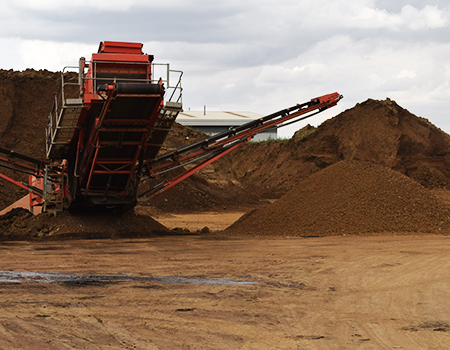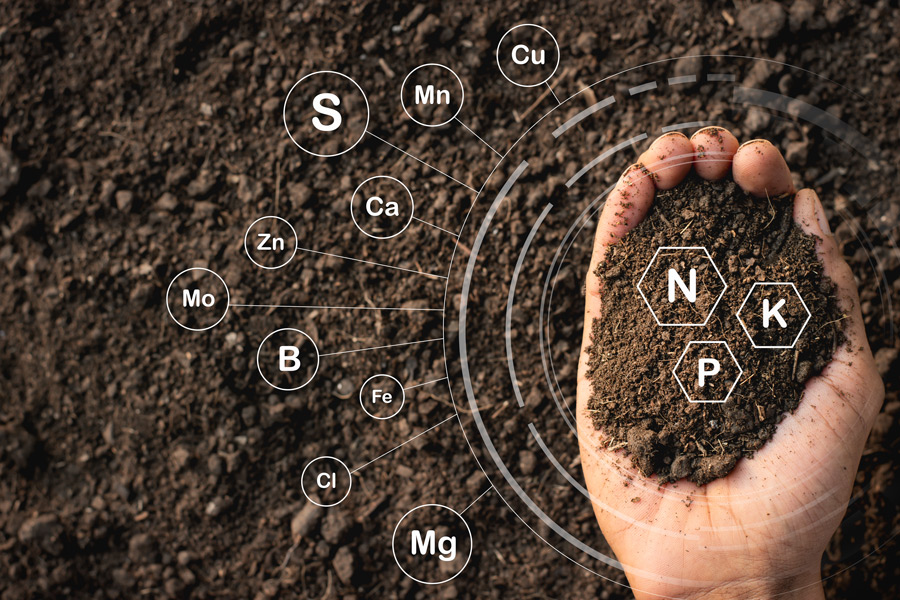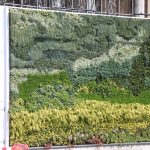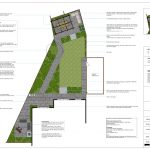Natural Soil vs Manufactured. Which is Best?
This week’s blog comes from renowned soil expert Simon Hedley from Boughton Loam. Simon discusses the differences between natural soil and manufactured growing media and asks which would work best for your garden design or landscaping project.
Soil is, of course, at the heart of every garden design project. From groundworks to green roofs, pH to planting plans, working with the natural soil is always preferable. But from time to time you will need to import soil. So do you go for a natural soil or a manufactured growing medium? Simon explains the differences between the two.

Landscaping topsoil being prepared at Boughton Loam’s Northamptonshire premises
The difference between natural soil and manufactured
There are a plethora of sources for imported topsoil, and there is an on-going debate about the benefits and drawbacks of using either natural or manufactured soils for importation.
Naturally occurring soil is the dynamic product of chemical, physical and biological processes. It is the result of interaction between the inherent nature of the parent material and the prevailing environment (including human activity and vegetation) Some natural topsoils may have been establishing themselves for thousands of years, and consequently have a robust, well developed humic content, nutrient content and microbial diversity.
Conversely, manufactured soils are bespoke mixtures, combining a varying amount of sand, clay, and organic matter in an attempt to provide an optimum mixture for that particular site and usage.
The importation of soil can be extremely stressful in regards to soil structure and function, and with rough handling, even the most premium loam may become compacted and unsuitable for its proposed end-use. With careful handling, a source of well-developed natural topsoil may be able to offer the benefit of readily available, and balanced, nutrient diversity to ensure strong, healthy plant growth from the beginning of its use.
Manufactured soils have become increasingly popular in recent years due to their ease of procurement. However, this preferred use of manufactured soils tends to ignore the benefits of using an established, balanced natural soil.
Microbial diversity
Microbial activity is crucial to the development and strong growth of flora within a soil. During the last few decades, it has become clear that soil microbes play a key role in essential ecosystem processes such as nutrient acquisition 4, carbon cycling 5, nitrogen cycling 6, soil formation 7, and disease resistance 89. Within one gram of soil, it is estimated that 1010 – 1011 bacteria are present 10, with anywhere from 6000–50,000 bacterial species 11 and up to 200 million fungal hyphae 12. This vast quantity of microbial life has understandably proven difficult to fully quantify and consequently many of the processes remain largely unknown. However, it is likely that these myriad microbial services are integral to healthy and sustained plant growth 13.
An imported natural soil has the advantage of containing established microbial communities that are tailored towards plant symbiosis. Manufactured topsoil can only achieve the same level of microbial diversity and richness with the addition of naturally formed soils 14.
Soil Nutrient balance

Unlike manufactured topsoils, the nutrient balance within a naturally sourced soil has had time to level out and cycle on a natural rhythm. A manufactured soil requires organic amendments prior to installation which can lead to excessive nutrient content, subsequently impeding plant health until the nutrient and organic matter levels have stabilised into a natural cycle; a process such as this may take years to stabilise. Any nutrient, organic or structural amendments can have detrimental secondary effects such as altering pH, water holding capacity and potentially triggering nitrogen deficiency.
Furthermore, the organic additions to manufactured soils may take a while to become incorporated into accessible nutrients for the host plants; a well-sourced natural soil will be able to mitigate this development period as it has already undergone this process.
To Conclude
A good source of natural soil would be preferable to the landscaper who is looking to reduce the risk of a nutrient imbalance in the host plants immediately after installation. It would be prudent to expect a well-sourced naturally formed topsoil to initially out-perform a similarly composed manufactured soil due to the intrinsic richness and diversity contained within the natural soil.
The development of the vast ecosystem of microbes and breakdown of organic matter is something that naturally takes time to occur; manufactured soils cannot reproduce this process within the same timescales.
A well-sourced naturally formed soil would therefore be the best choice for a landscaper who was aiming to install a working soil that could immediately provide an ideal, reliable environment for the host plant rhizosphere and consequently plant health.
About Boughton Loam
If you are a regular visitor to landscaping trade shows, you will probably have met the Boughton Loam team. This Company has been supplying the landscape and amenity sector with high quality growing media since 1985. Based in Kettering, Northamptonshire, Boughton’s soils and substrates are delivered to landscapers all around the country and have been used for some truly prestigious projects. Services also include removing excess topsoil from site and bringing it up to BS3882 standard.
Discover more about Simon Hedley and Boughton Loam by visiting the website
Click here to visit the Boughton Loam website
Related Articles and Useful Links
For a plethora of information on soil, growing medium, regulations and standards, visit the Landscape Library
To learn more about site surveying – read our guest blog from Alan Sargent




